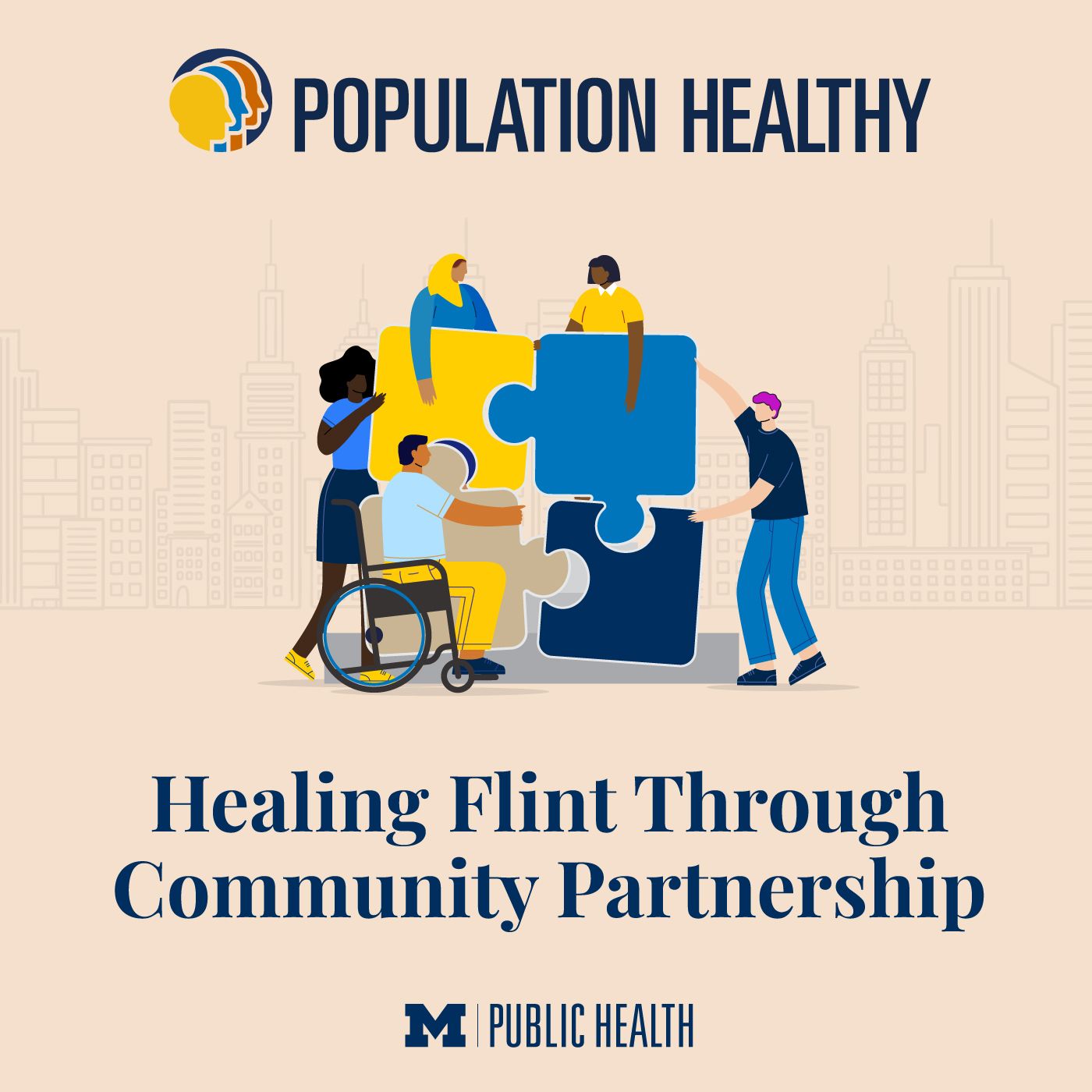
In 1960, the population of Flint, Michigan was nearly 200,000 people. It was a center of American manufacturing and economic prosperity. But in the decades that followed, manufacturers abandoned their Flint operations. Many White families left for the suburbs and the now majority Black city entered a state of economic decline. In 2011 then-Governor Rick Snyder appointed an emergency manager. This government official had the authority to override decisions made by Flint’s city council and mayor in the interest of reducing the city’s debt. In 2014, in an effort to cut costs, the city switched its longstanding water supply from the Detroit Water Department to the nearby untreated Flint river. This decision led to a public health crisis that will affect the city for generations.
In this episode of Population Healthy Season 3: Race, Inequity, and Closing the Health Gap, we explore how the city of Flint faces a myriad of interwoven and complex public health challenges and how incorporating the voices of the city’s residents into research and decision making through the practice of Community-Based Participatory Research (CBPR) can lead to more positive and meaningful health outcomes for the community.
view more
In this episode of Population Healthy Season 3: Race, Inequity, and Closing the Health Gap, we explore how the city of Flint faces a myriad of interwoven and complex public health challenges and how incorporating the voices of the city’s residents into research and decision making through the practice of Community-Based Participatory Research (CBPR) can lead to more positive and meaningful health outcomes for the community.
More Episodes
Population Healthy Season 6 trailer
 2024-03-12
2024-03-12
 2024-03-12
2024-03-12
Health and dignity for Michigan farmworkers
 2024-02-27
2024-02-27
 2024-02-27
2024-02-27
Putting oncologists out of business
 2024-02-20
2024-02-20
 2024-02-20
2024-02-20
Ahead of the Curve: Bakari Sellers
 2024-02-13
2024-02-13
 2024-02-13
2024-02-13
Bhramar Mukherjee: A data-driven fairytale
 2024-02-06
2024-02-06
 2024-02-06
2024-02-06
Weight stigma and redefining healthy
 2024-01-30
2024-01-30
 2024-01-30
2024-01-30
The invisible impacts of air pollution
 2024-01-23
2024-01-23
 2024-01-23
2024-01-23
Vic Strecher: Living with purpose
 2024-01-16
2024-01-16
 2024-01-16
2024-01-16
Alternatives to policing
 2023-03-28
2023-03-28
 2023-03-28
2023-03-28
School safety
 2023-03-14
2023-03-14
 2023-03-14
2023-03-14
012345678910111213141516171819
Create your
podcast in
minutes
- Full-featured podcast site
- Unlimited storage and bandwidth
- Comprehensive podcast stats
- Distribute to Apple Podcasts, Spotify, and more
- Make money with your podcast
It is Free
- Privacy Policy
- Cookie Policy
- Terms of Use
- Consent Preferences
- Copyright © 2015-2024 Podbean.com






